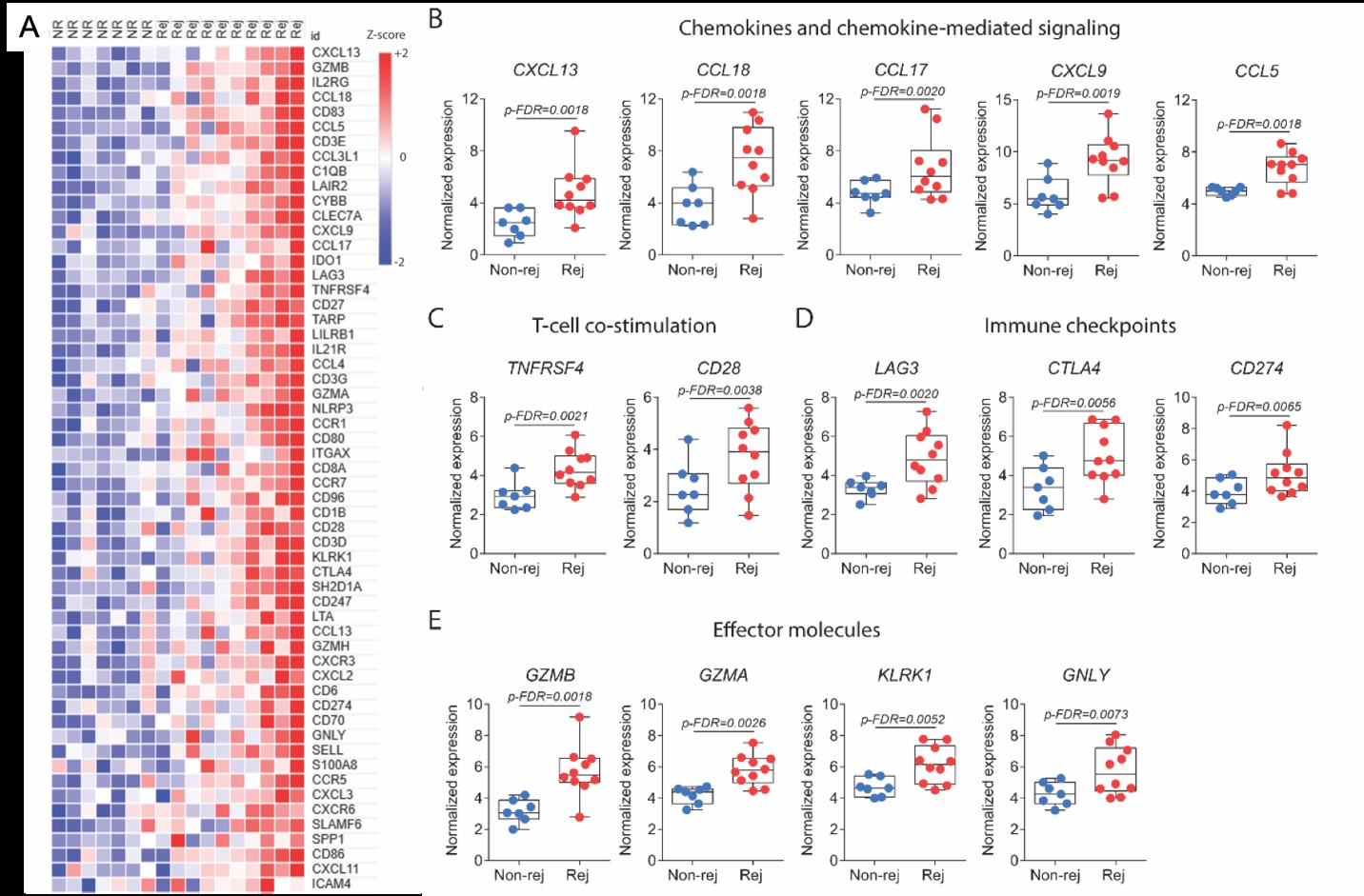CCL18 Plays a Crucial Role in T Cell Recruitment in Upper Extremity Transplant Rejection
1Medicine, Renal Division, Brigham and Women's Hospital, Boston, MA, 2Brigham and Women's Hospital, Boston, MA
Meeting: 2020 American Transplant Congress
Abstract number: 507
Keywords: T cells
Session Information
Session Name: Vascularized Composite Allograft
Session Type: Oral Abstract Session
Date: Saturday, May 30, 2020
Session Time: 3:15pm-4:45pm
 Presentation Time: 3:39pm-3:51pm
Presentation Time: 3:39pm-3:51pm
Location: Virtual
*Purpose: Upper extremity transplantation (UET) is a life-changing procedure for amputee patients. However, 90% of patients experience acute skin rejection in the first post-transplant year, leading to higher burden of immunosuppressive therapy. Greater knowledge of the immunological processes after UET is of paramount importance to the development of narrowly targeted immunosuppressive drugs with reduced side-effects. Here, we have performed molecular characterizations in the allografts of patients who underwent bilateral UET at our institution.
*Methods: Detailed longitudinal immunological characterization was performed from 45 prospectively collected skin biopsies and peripheral blood mononuclear cells. Skin biopsies were also analyzed for 770 genes by Nanostring in rejection and non-rejection time-points. The role of promising gene candidates in their contribution to acute rejection was further explored in an NSG humanized skin transplant mouse model (human immune cells and human skin graft).
*Results: The mean follow-up was 5.3 years (range, 3 to 8). The UET patients had a mean of 3 acute cellular rejection episodes (range, 2 to 4) and presented with an increase in circulating Th17 over time. Allograft tissues showed greater numbers of activated Th1, Th17, and CD8+ T-cells when compared to adjacent healthy skin. The rejection was characterized by a decrease in circulating Th2 and Treg cells and an increase in activated CD8+ T-cells and Th1 cells. The Nanostring analysis of skin biopsies revealed an upregulation in pathways of T-cell co-stimulation, effector immune molecules, and chemokines, in particular CCL18 (Fig 1). Since CCL18 is not present in mice, we used an NSG humanized transplant mouse model to demonstrate a crucial role of CCL18 in enhancing T cell infiltration in human skin allograft.
*Conclusions: In sum, the acute cellular rejection process in UET patients is characterized by an increased expression of chemokines in the skin microenvironment. Our results suggest that the local targeting of T-cell-attracting chemokines could be a promising complementary immunosuppressive approach in UET.
To cite this abstract in AMA style:
Borges TJ, Abarzua P, Kollar B, Lima-Filho M, Aoyama BT, Murphy GF, Pomahac B, Lian CG, Talbot SG, Riella LV. CCL18 Plays a Crucial Role in T Cell Recruitment in Upper Extremity Transplant Rejection [abstract]. Am J Transplant. 2020; 20 (suppl 3). https://atcmeetingabstracts.com/abstract/ccl18-plays-a-crucial-role-in-t-cell-recruitment-in-upper-extremity-transplant-rejection/. Accessed December 21, 2025.« Back to 2020 American Transplant Congress

